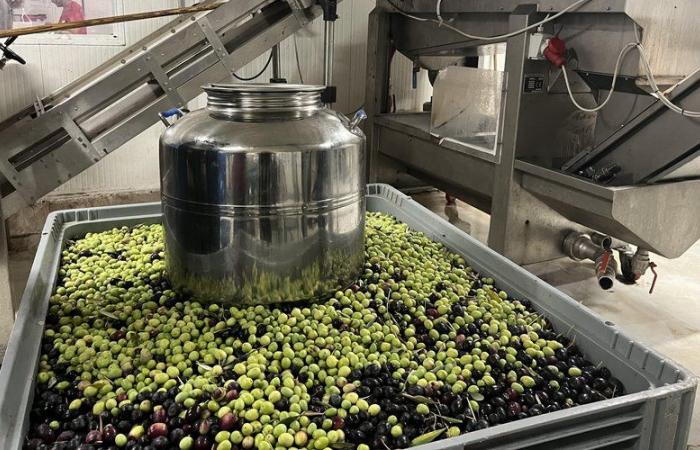
The olive harvest is underway in the Rhone Gard. Overall production is down, compared to 2023, according to olive growers, despite yields within the seasonal averages.
It's a complicated start to the season for olives in and around Gard Rhone. The first feedback is not very positive from the olive growers. “We are not heading towards a year full of harvests”testifies the producers of the Le Chapelier estate, in Saint-Julien-de-Peyrolas.
The year 2024 brought a series of adventures for the olive trees: floods, Mediterranean episodes, the return of the olive fly… “It had been three years since the olives had been prickedsays Hélène Thibian from the Mas de Libian estate, in Saint-Marcel-d'Ardèche. “At first glance, it is estimated that production should be 20% lower than last year's harvest..”
Yields within the seasonal averages
In addition to an overall lower production, several individuals say “disappointed” yields. On November 12, the yield of the common pot was estimated at 9 liters per kilo of olives at Moulin des Sables, in Saint-Paulet-de-Caisson. Despite the disappointment displayed by certain individuals, the producers of the Mas de Libian estate affirm that “the yields are the same as last year.“
“It is not the time to harvest the olives if we want to produce a lot of oil because they are waterlogged from the rainconfirms Sandra Gimenez, one of the Moulin des Sables employees. Every year, people say they are surprised by the performance in November. But the ideal harvest time is in December. When the olives are black and wrinkled after the first frost, the yields are more interesting.“
A harvest that depends on rain
Since the oil is produced by extracting it from the stones (and not the flesh and pulp of the fruit), yields depend on the weather. When the soils are wet after Mediterranean episodes, olive trees absorb water and store it in their fruits. In just a few days of rain, the olives are waterlogged and become heavy.
“You should not harvest olives for the quantity of oil but according to your personal tastesexplains Sandra Gimenez. When the olives collected are green, the individual leaves with a small quantity but the oil is very green and with a fruity taste. Conversely, when you wait for them to blacken, you leave with more oil, copper color and with a less lively taste.“
In the coming days, the absence of rain and the return of wind should improve yields according to the Moulin des Sables team.





